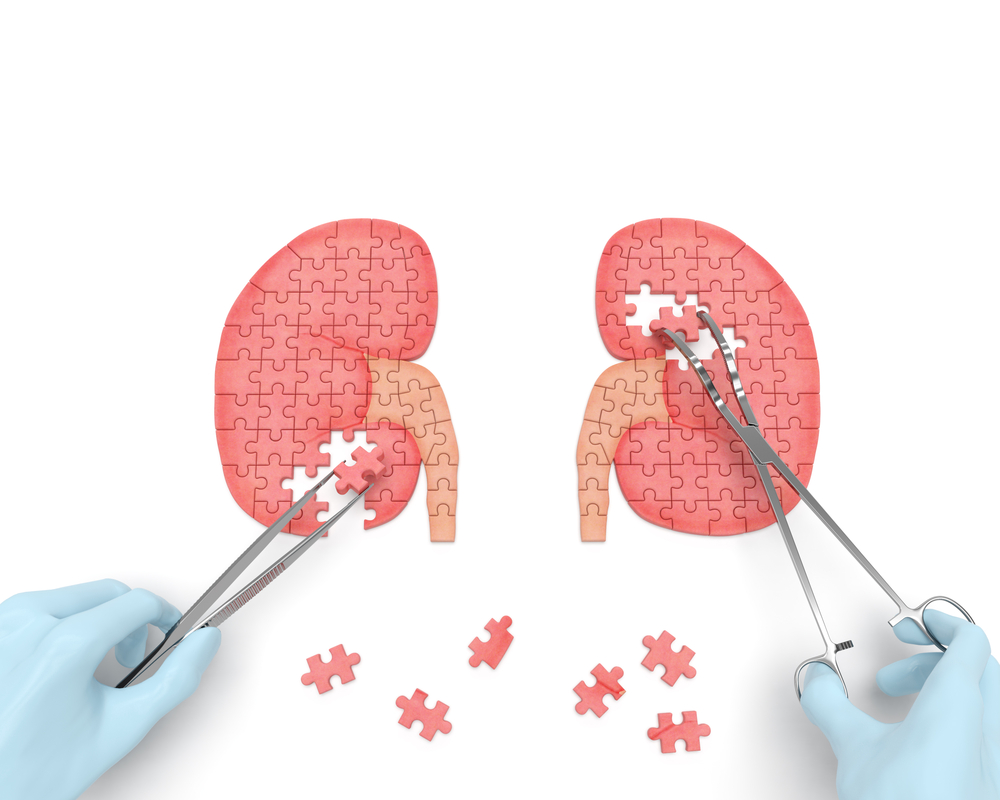Potential New Anti-Fibrotic Therapy Targets Embryonic Process in Kidneys
Written by |

In a new study entitled “Epithelial-to-mesenchymal transition induces cell cycle arrest and parenchymal damage in renal fibrosis“ a team of scientists showed that upon injury, kidney cells activate a cellular process, the epithelial-to-mesenchymal transition (EMT), which ultimately leads to fibrosis in the kidneys. The research team performed additional studies and discovered that targeting two EMT-activated genes may offer potential therapeutic avenues for patients suffering with kidney fibrosis, such as lupus patients. The study was published in the journal Nature Medicine.
Fibrosis is one of the leading causes for lupus-related deaths, with kidneys being a particular sensible organ for fibrosis damaging effects. Accordingly, approximately 40 percent of all deaths from kidney failure are triggered by fibrosis.
In this study, a team of scientists at The University of Texas MD Anderson Cancer Center investigated the mechanisms behind kidney fibrosis to identify potential new targets for therapeutical intervention. The team discovered that EMT, usually active during our embryonic development, is re-activated in response to damaged kidney cells.
Researchers found that while kidney cells activate EMT to protect themselves against damage, this leads to alterations in kidney cells’ division cycle. The cells become “stuck” in a particular cell cycle phase and cannot proceed in their division. This has consequences in their expression patterns. Mouse models of experimentally induced renal fibrosis were used and the authors observed that blocking the expression of two particular genes in kidney cells, Twist1 and Snai1, was sufficient to inhibit the EMT program, while promoting the integrity and maintenance of kidney cells. As a result, there was an increase in kidney repair and regeneration, which attenuated fibrosis.
These findings thus suggest that future therapeutics targeting the EMT program in kidney cells, during renal injury, can become potential anti-fibrotic therapies.
Raghu Kalluri, M.D., Ph.D., chairman of Cancer Biology and study lead author commented, “Our work shows that damaged kidney cells respond by undergoing EMT to protect themselves from further damage but in the process, develop long-term damage due to fibrosis, a form of chronic wound healing. Each adult kidney cell behaves like an embryonic cell, losing the ability to perform important tasks that keep the organ functional. With kidney fibrosis, EMT impacts tubular epithelial cells (TECs). In 2003, we demonstrated that EMT can be targeted to reverse kidney disease and fibrosis. The current study provides compelling genetic findings about that concept and new ideas for anti-fibrosis therapy. It reveals that inhibition of EMT in TECs during chronic kidney injury represents a potential anti-fibrosis therapy. It would be a significant advance in how this illness is treated and could potentially save many lives. Our experiments offer evidence for the functional relevance and importance of an EMT program in the progression of chronic kidney injury, and they support the notion that the EMT program, while indispensable for the proper growth of the embryos, is harmful in this setting and therefore a viable therapeutic strategy for protecting functional parenchyma in kidney fibrosis.”




